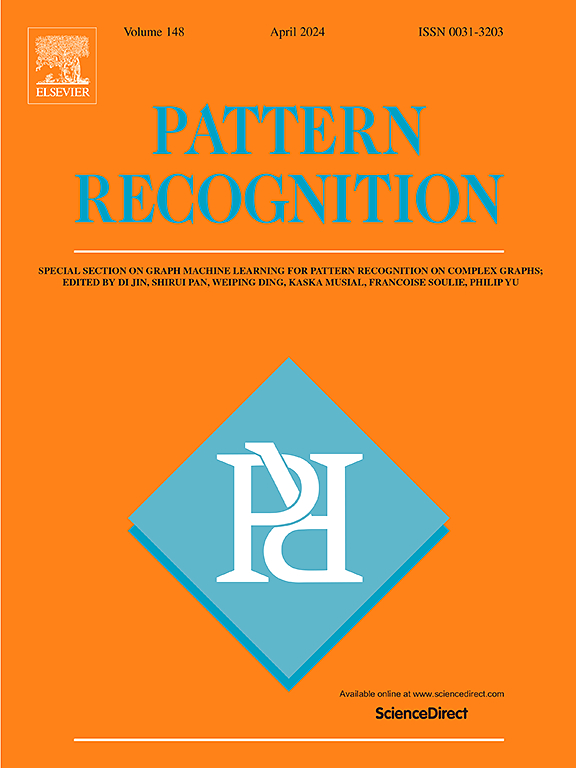使用模糊系统和新型旋转方法的稳健指纹识别方法
IF 7.5
1区 计算机科学
Q1 COMPUTER SCIENCE, ARTIFICIAL INTELLIGENCE
引用次数: 0
摘要
过去几十年来,法医学得到了长足的发展。其关键作用是为犯罪调查人员提供从犯罪现场获得的经过处理的数据,以便在法庭上取得更准确的结果。生物识别技术已经证明了它对法医专家遇到的各种重大犯罪的强大威力。指纹因其唯一性和低成本而成为迄今为止最重要的生物识别技术。自动指纹识别系统(AFIS)于 20 世纪 60 年代初在各国的合作下诞生:美国、英国、法国和日本。从那时起,自动指纹识别系统就开始逐渐发展起来,因为在犯罪现场发现的一些难题,如指纹变形和部分切割,反过来又会严重影响专家的最终计算。指纹识别结果的模糊性是建立一个强大的指纹识别系统的主要动机,该系统在各个阶段引入了新的增强型方法,以帮助专家做出更准确的判断。拟议的指纹识别系统使用傅立叶域分析进行图像增强,然后在应用旋转和核心点检测方法后围绕核心点切割图像。之后,系统根据使用局部二进制模式(LBP)提取的指纹直方图之间的距离计算相似度。系统的最后一步是将结果转化为合理的形式,利用模糊性为答案提供更多可能性。所提出的识别系统在 FVC 2002 和 FVC 2000 数据库中表现出了很高的效率。例如,将我们的系统应用于 FVC 2002 的结果提供了一组三个有序匹配的候选对象,其中 97.5% 的结果提供了正确的第一顺序候选对象,其余 2.5% 的结果提供了正确的第二顺序候选对象。本文章由计算机程序翻译,如有差异,请以英文原文为准。
A robust fingerprint identification approach using a fuzzy system and novel rotation method
Forensic science has developed significantly in the last few decades. Its key role is to provide crime investigators with processed data obtained from the crime scene to achieve more accurate results presented in court. Biometrics has proved its robustness against various critical crimes encountered by forensics experts. Fingerprints are the most important biometric used until now due to their uniqueness and production low cost. The automated fingerprint identification system (AFIS) came into existence in the early 1960s through the cooperation of the countries: USA, UK, France, and Japan. Ever since it started to develop gradually because of the challenges found at the crime scenes such as fingerprints distortions and partial cuts which in turn can severely affect the final calculations made by experts. The vagueness of the results was the main motivation to build a robust fingerprint identification system that introduces new and enhanced methods in its stages to help experts make more accurate decisions. The proposed fingerprint identification system uses Fourier domain analysis for image enhancement, then the system cuts the image around the core point after applying the rotation and core point detection methods. After that, it calculates the similarity based on the distance between fingerprint histograms extracted using the Local Binary Pattern (LBP). The system's last step is to translate the results into a sensible form where it utilizes fuzziness to provide more possibilities for the answer. The proposed identification system showed high efficiency on FVC 2002 and FVC 2000 databases. For instance, the results of applying our system on FVC 2002 provided a set of three ordered matching candidates such that 97.5 % of the results provided the correct candidate as the first order, and the rest of 2.5 % provided the correct candidate as the second order.
求助全文
通过发布文献求助,成功后即可免费获取论文全文。
去求助
来源期刊

Pattern Recognition
工程技术-工程:电子与电气
CiteScore
14.40
自引率
16.20%
发文量
683
审稿时长
5.6 months
期刊介绍:
The field of Pattern Recognition is both mature and rapidly evolving, playing a crucial role in various related fields such as computer vision, image processing, text analysis, and neural networks. It closely intersects with machine learning and is being applied in emerging areas like biometrics, bioinformatics, multimedia data analysis, and data science. The journal Pattern Recognition, established half a century ago during the early days of computer science, has since grown significantly in scope and influence.
 求助内容:
求助内容: 应助结果提醒方式:
应助结果提醒方式:


